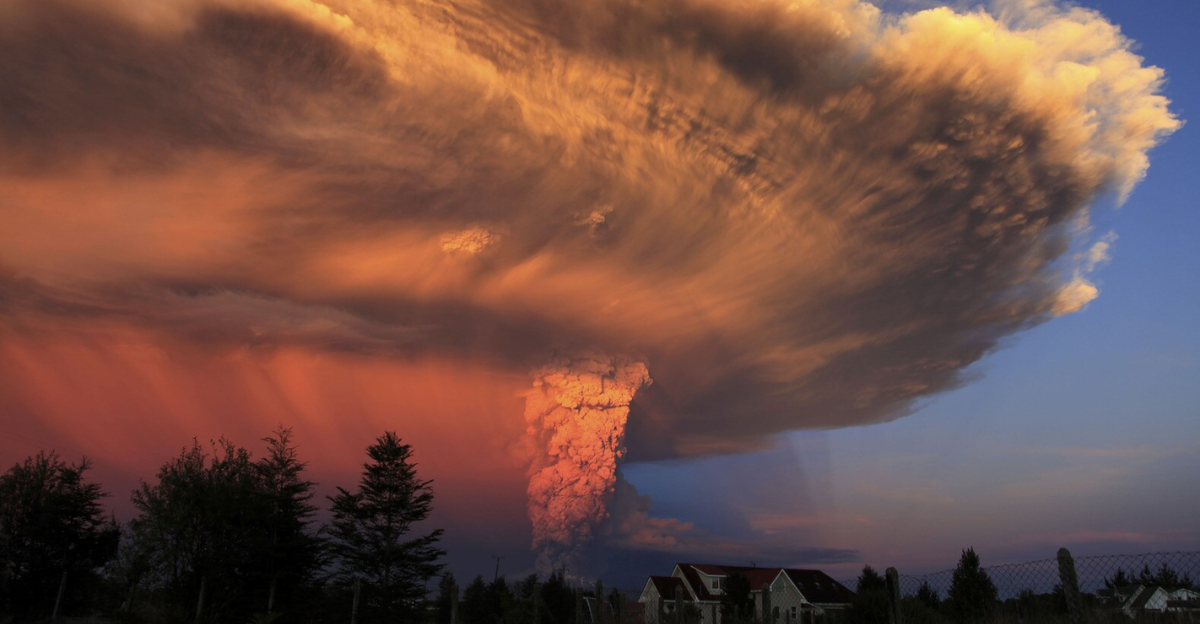
After months of tension and worry, Alaska’s Mount Spurr volcano has returned to calm. Earlier this year, scientists from the U.S. Geological Survey’s Alaska Volcano Observatory had raised warnings, believing an eruption was “likely” within weeks or months.
Mount Spurr, only 78 miles from Alaska’s biggest city, Anchorage, had been showing all the classic signs of impending eruption since early 2024.
There were thousands of small earthquakes, visible changes to the ground’s shape, and even a new hot crater lake at the summit, the sort of things that usually mean magma is moving upward, getting ready to break through.
But by August 20, 2025, scientists officially lowered the alert to GREEN/NORMAL, signaling that the danger had passed, and people could relax.
Why Mount Spurr Matters
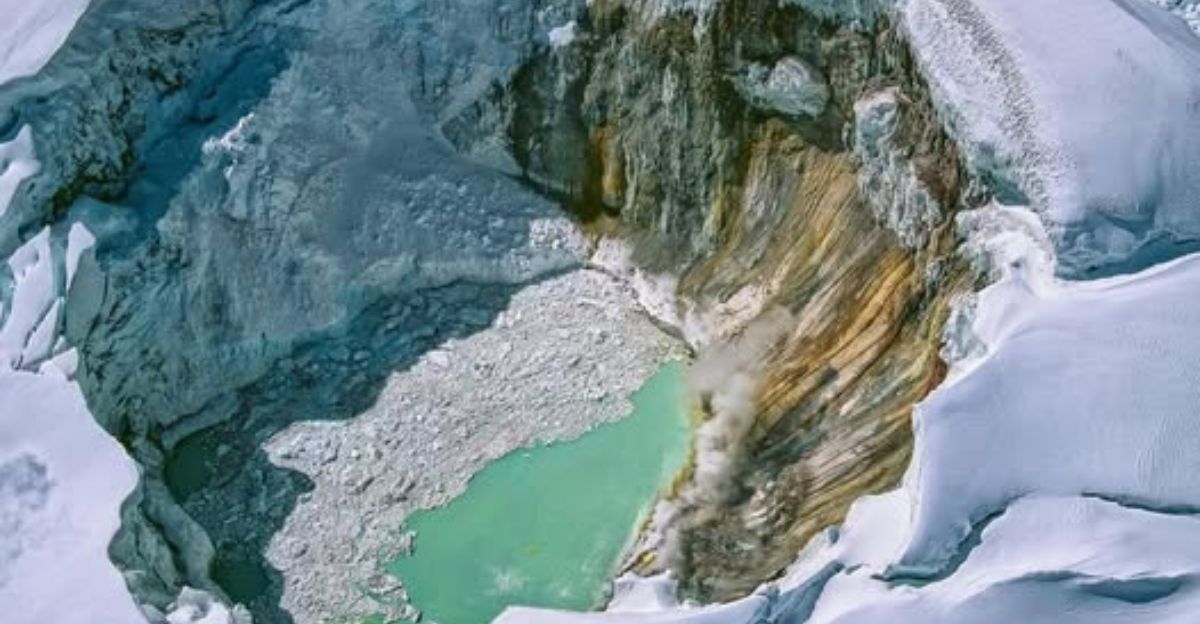
Mount Spurr is one of Alaska’s most closely watched volcanoes. According to federal volcano hazard assessments, it ranks tenth most dangerous in the state. The main reason?
It has powerful eruptions and is located close to the largest city. The peak is a vast, glacier-covered mountain visible from Anchorage on sunny days, with some 300,000 people living and working nearby.
The area has two volcanic vents: Mount Spurr’s main summit and Crater Peak, located a few miles south.
Crater Peak is the one that caused trouble in the past, with significant eruptions in 1953 and, most famously, in 1992, which disrupted life all across southcentral Alaska.
Earthquakes Tell a Story
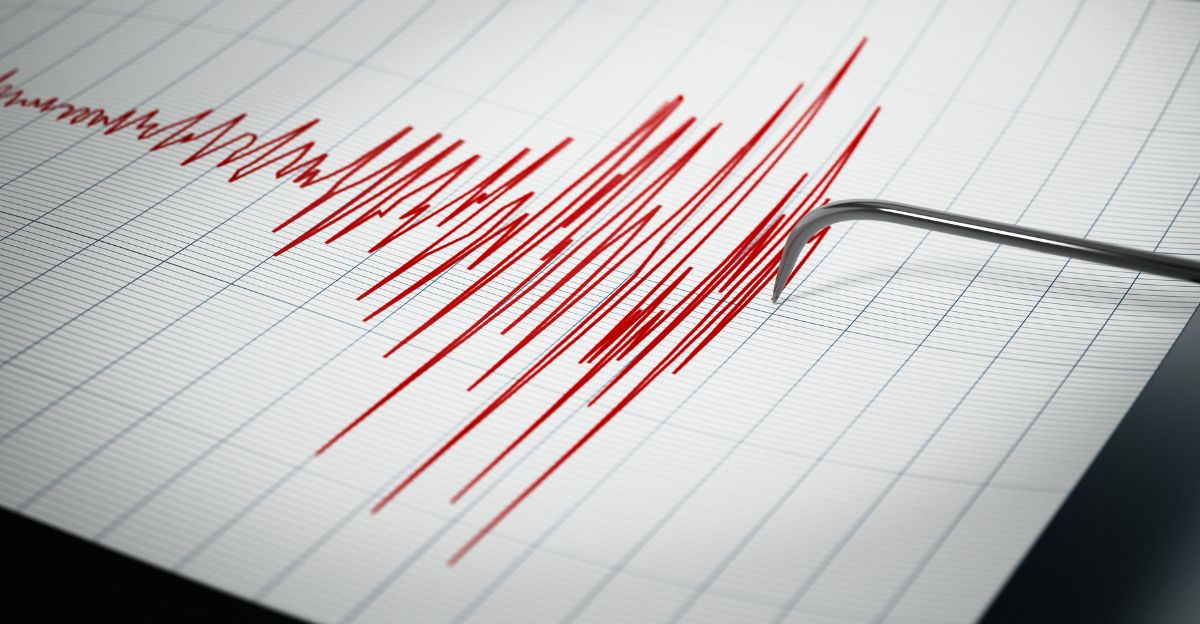
The most recent episode of unrest began quietly. In April 2024, scientists noticed more small earthquakes under the volcano’s snowy slopes.
By early 2025, they were logging over 125 quakes each week, with over 3,400 earthquakes recorded in total during the 17 months. Most were too small to feel, but some reached magnitude 2.9.
The tremors happened at two main depths: shallow ones like 0-6 miles down indicated magma rising, while deeper quakes (12–22 miles down) suggested significant shifts in the molten rock further below, as if the volcano was “recharging” from its deep source.
The Volcano Is Growing
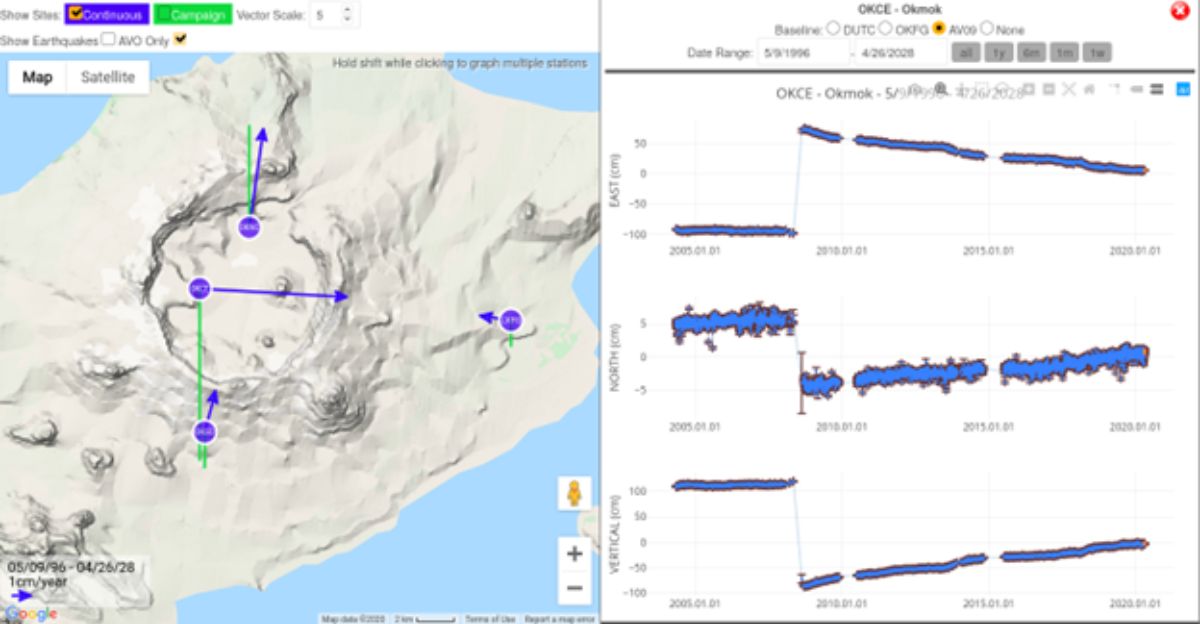
Scientists use GPS sensors and satellites to look for changes in the ground near volcanoes, a process called deformation monitoring.
At Mount Spurr, they saw the ground at certain stations bulge outward by more than two and a half inches from its usual position.
This kind of swelling, called inflation, tells geologists that magma is intruding below, pushing rock aside and creating room for molten rock close to the surface.
This inflation went on for over a year before slowly stopping in mid-March 2025, the first clue that the volcano’s latest “recharge” might be fizzling out.
Magma Movement Stalls
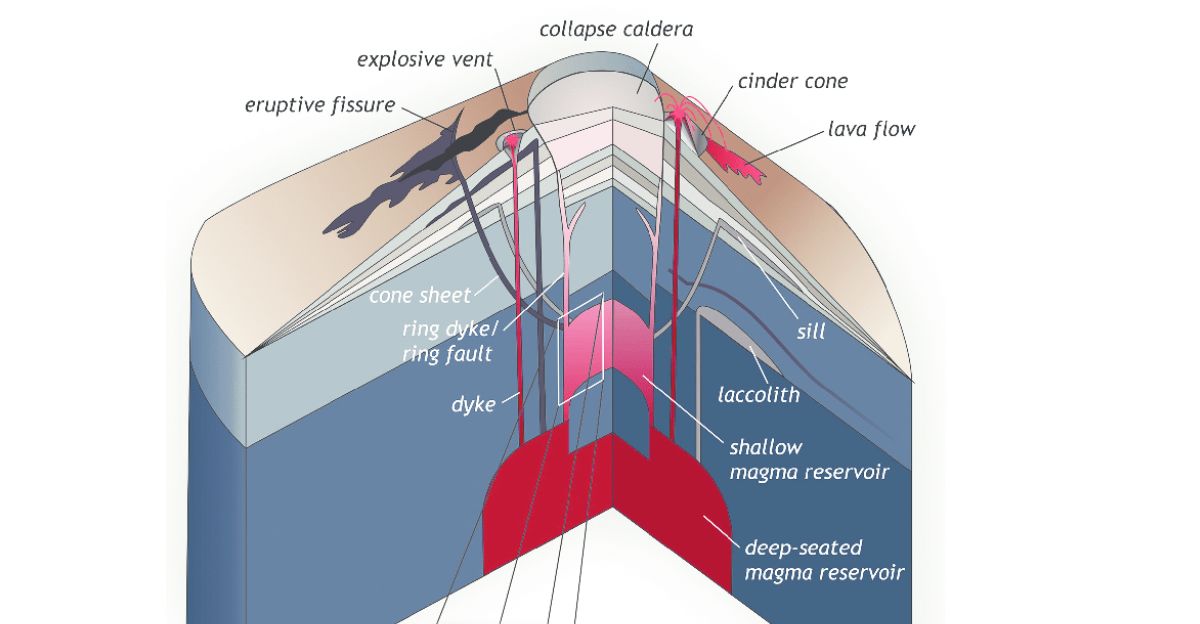
In July 2025, the key news came out: the magma creeping up toward the surface was stuck. Instead of erupting, the molten rock got trapped and cooled below the summit.
The Observatory’s scientists plainly said, “The ascent of magma to shallow levels beneath the volcano’s summit region from January 2024 to March 2025 has stalled.”
While this doesn’t mean the volcano is “dead,” it has significantly lowered the risk of a sudden disaster.
A Major Air Traffic Issue
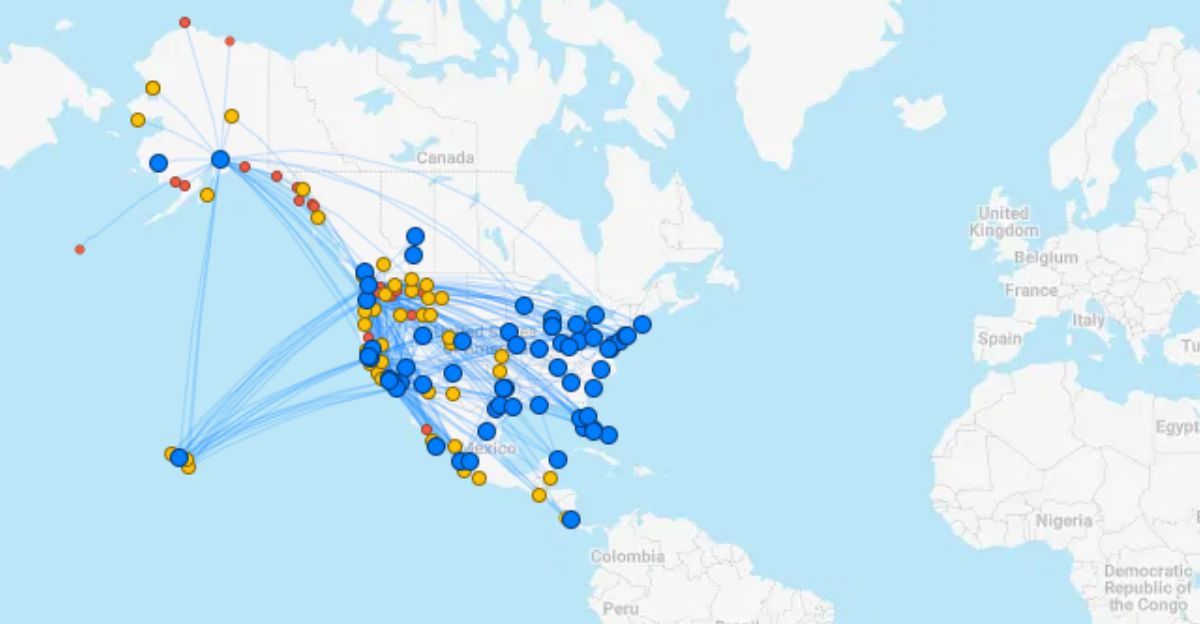
Why is Mount Spurr’s activity so alarming? Location, location, location, especially for airplanes.
The air above Alaska is one of the world’s busiest freight corridors, as planes fly between North America, Asia, and Europe daily.
The 1992 Crater Peak eruption put just a few millimeters of ash on Anchorage, but still forced the airport shut for nearly a full day and canceled lots of flights.
With over 60,000 flights daily passing over Alaska, a bigger eruption would bring even more mayhem, as volcanic ash turns jet engines into molten metal and makes flying impossible in affected zones.
When Day Turned to Night
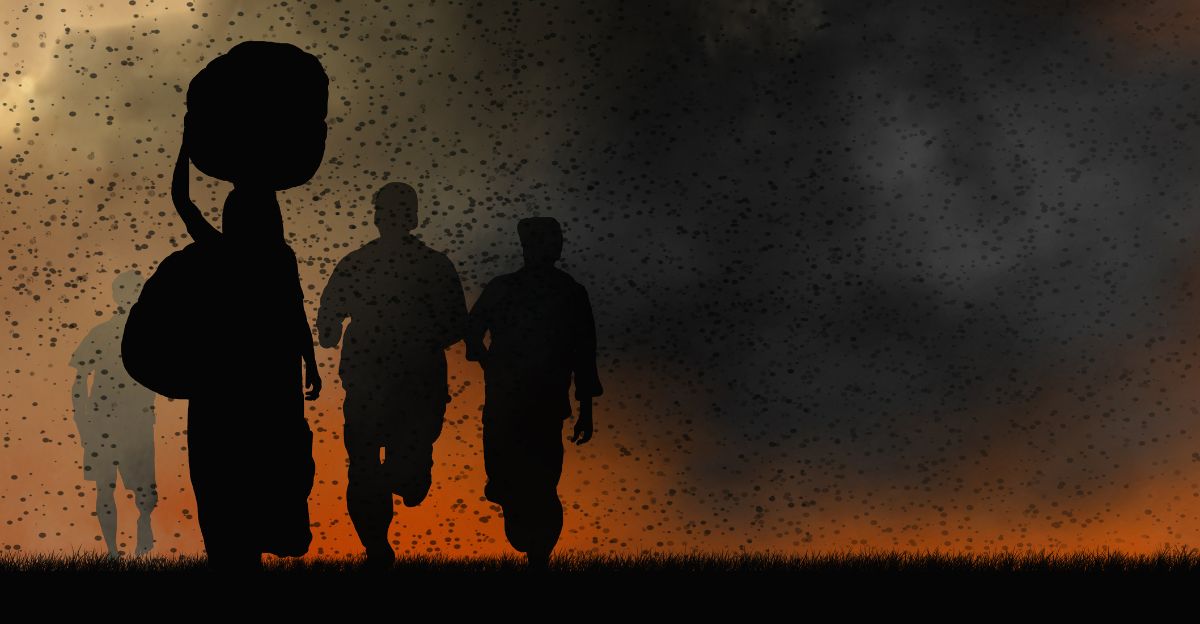
Anchorage residents who remember 1992 tell of how, for hours, the sky darkened and ash fell thick as snow across the region.
The eruption sent an ash plume nearly nine miles high, and the wind blew volcanic debris right over the city.
Water systems were overwhelmed as people tried to wash the gray, gritty ash from homes and cars.
The tiny particles got everywhere, causing air quality to drop and triggering health alerts.
Economic Chain Reactions
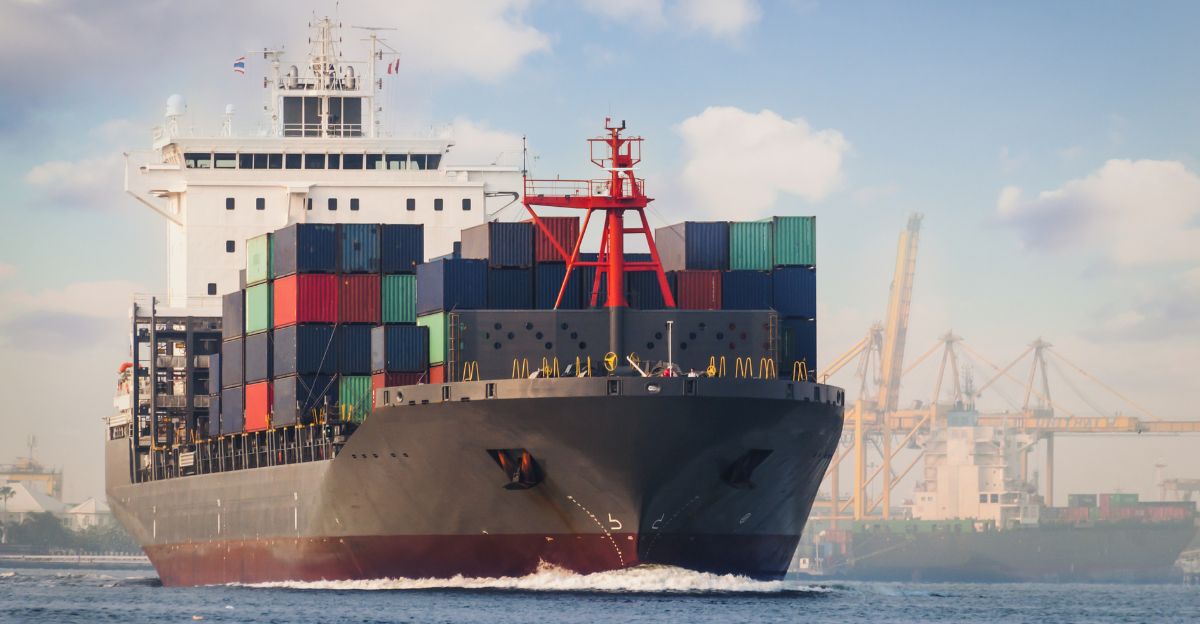
The cost of cleaning up ash, rerouting flights, and keeping vital goods moving in Alaska is enormous.
The relatively small 1992 eruption cost almost $2 million to clean up in Anchorage, and experts say a similar event now would cost much more due to population and infrastructure growth.
Many isolated towns in Alaska rely on air cargo for all their food and medicine, so any extended closure means big trouble.
If trans-Pacific shipping is disrupted, even people far from Alaska might feel the consequences, delays in everything from mail to electronics to vital medical shipments.
Volcanoes Under the Microscope
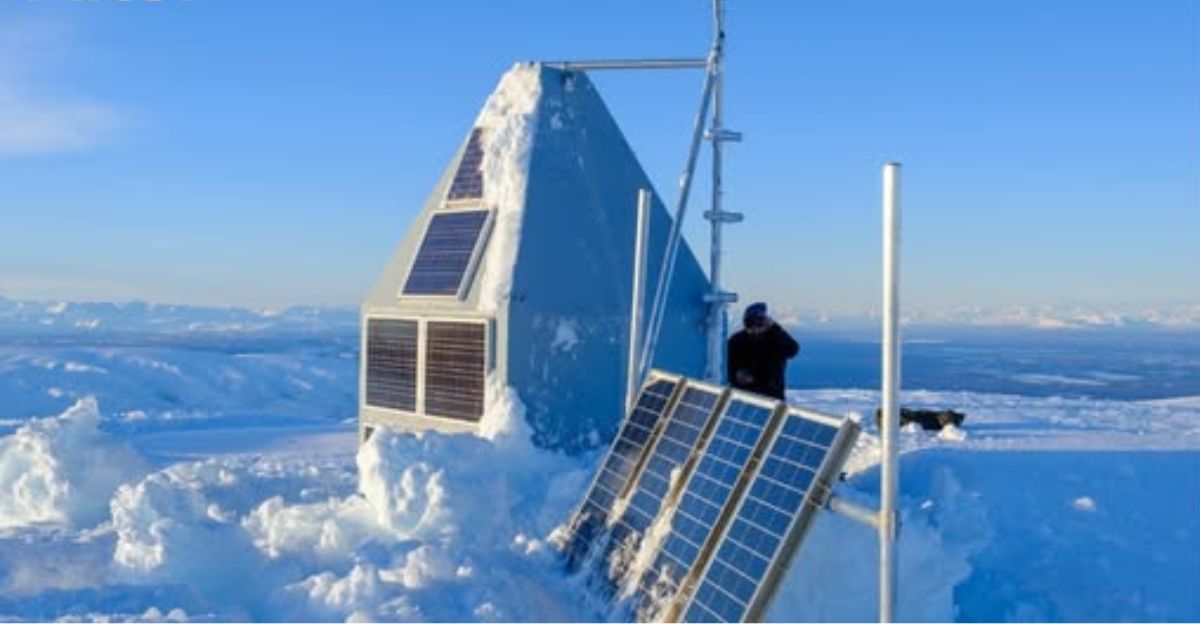
Since Mount Spurr is so important, it’s one of the most heavily monitored volcanoes in the state.
Scientists keep tabs using earthquakes, GPS, gas sensors, cameras, and satellites to “see inside” the volcano before it erupts.
Special instruments track carbon and sulfur dioxide, helping scientists understand what’s happening deep underground.
Aircraft equipped with sensitive detectors fly over the vents, measuring gas levels and getting more warning of what’s brewing out of sight.
The Crater Lake Mystery
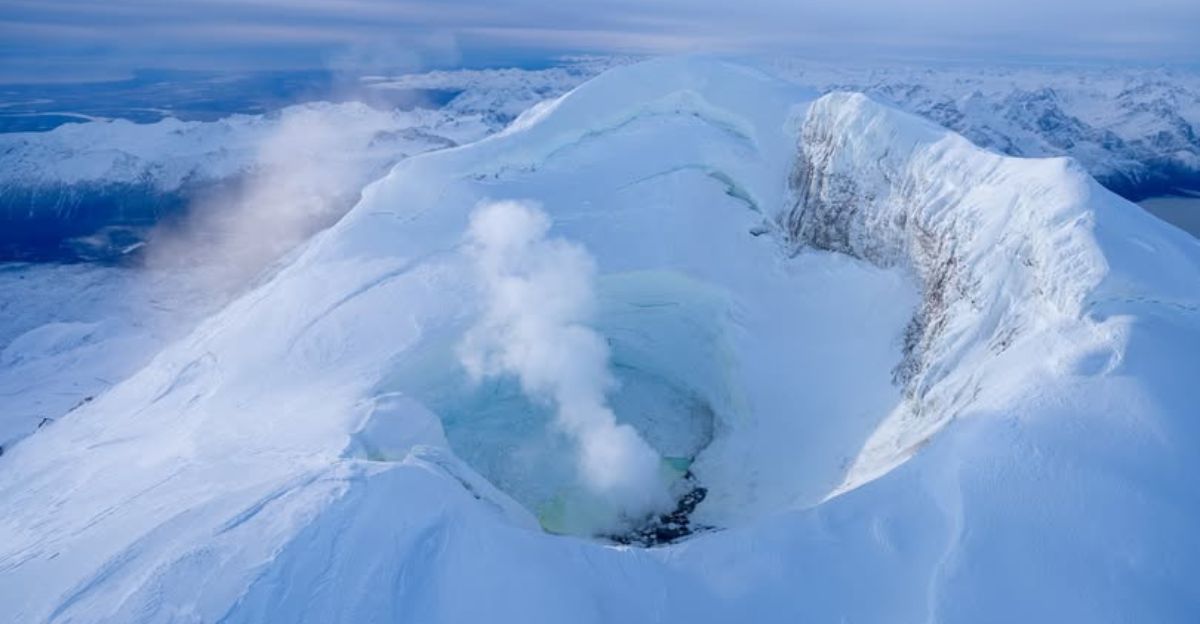
During the most recent cluster of volcanic activity, a new hot lake formed at Mount Spurr’s summit, melting ice and snow as heat rose from below.
Scientists called this an “acid crater lake.” It grew to about five acres before stopping.
This kind of lake also showed up during volcanic unrest in the early 2000s, letting off steam plumes observers nicknamed “Jumbo Jet.”
In September 2025, the lake changed from gray to blue-green, suggesting less sulfuric gas was being released, another sign that things were calming down.
Why Did the Eruption Fail?
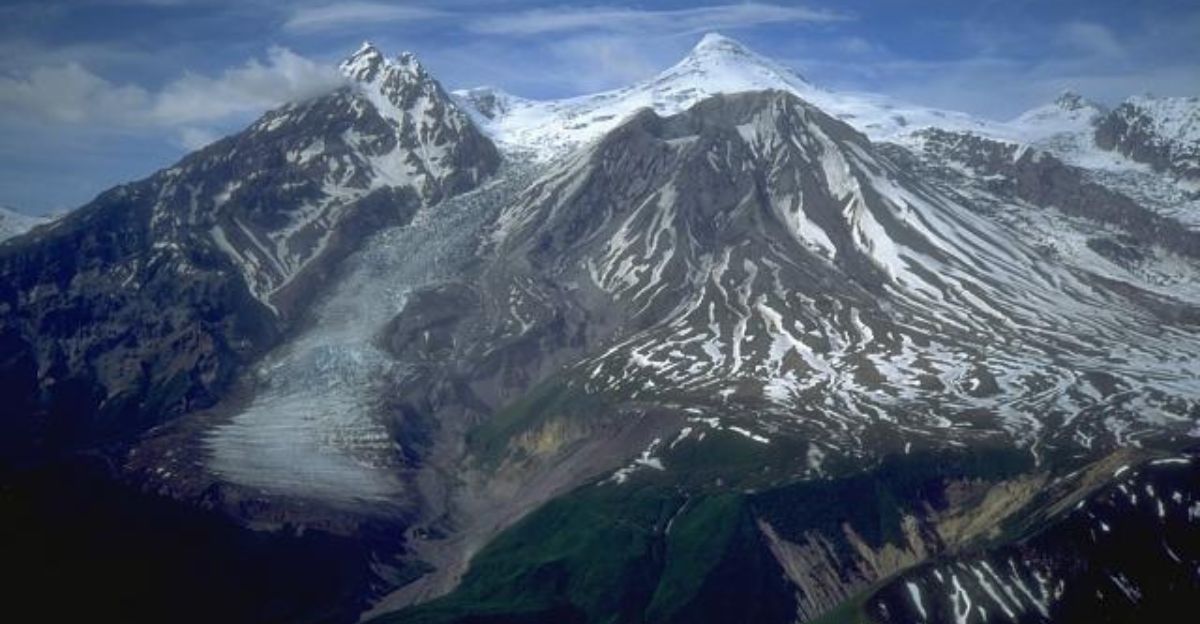
About 90% of volcano “recharging” episodes end without an eruption. The magma cools, stalls, or loses pressure before it can break through.
This is known as a “failed eruption.” Mount Spurr did the same thing in 2004–2006: a hot magma intrusion fizzled, causing lots of surface changes but never making it through to erupt.
Every new event gives scientists more information about how and why the system sometimes halts rather than explodes, key knowledge for making better predictions.
Pressure Ran Out
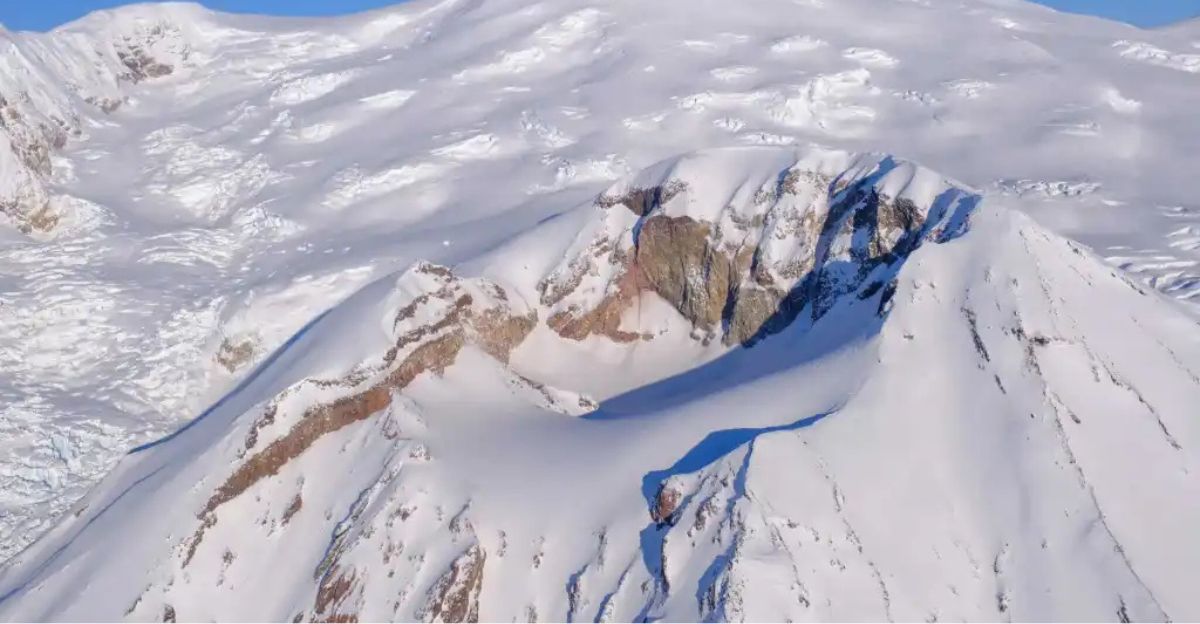
As volcano expert Dave Schneider said, “There just wasn’t enough supply to really push it up to the surface… we’re seeing a volcano that looks like it’s going back to sleep.”
Without enough fresh magma or built-up gas, the volcano’s system relaxed, cooling down instead of blowing up.
The gradual fall of minor earthquakes, no more surface bulging, and a stable crater lake all pointed to a return to normal.
But scientists remain cautious and alert for sudden changes, as with all volcanoes, especially one well-watched.
Don’t Sleep on the Giant

Even at “normal” status, Mount Spurr stays under close watch.
Earthquake sensors, gas measurement flights, and satellite images monitor any signs the volcano might be waking up again.
Scientists post weekly updates online, looking for new quakes or ground movements.
By tracking dozens of data points, scientists can give warnings days ahead of any new crisis.
Real-Life Readiness
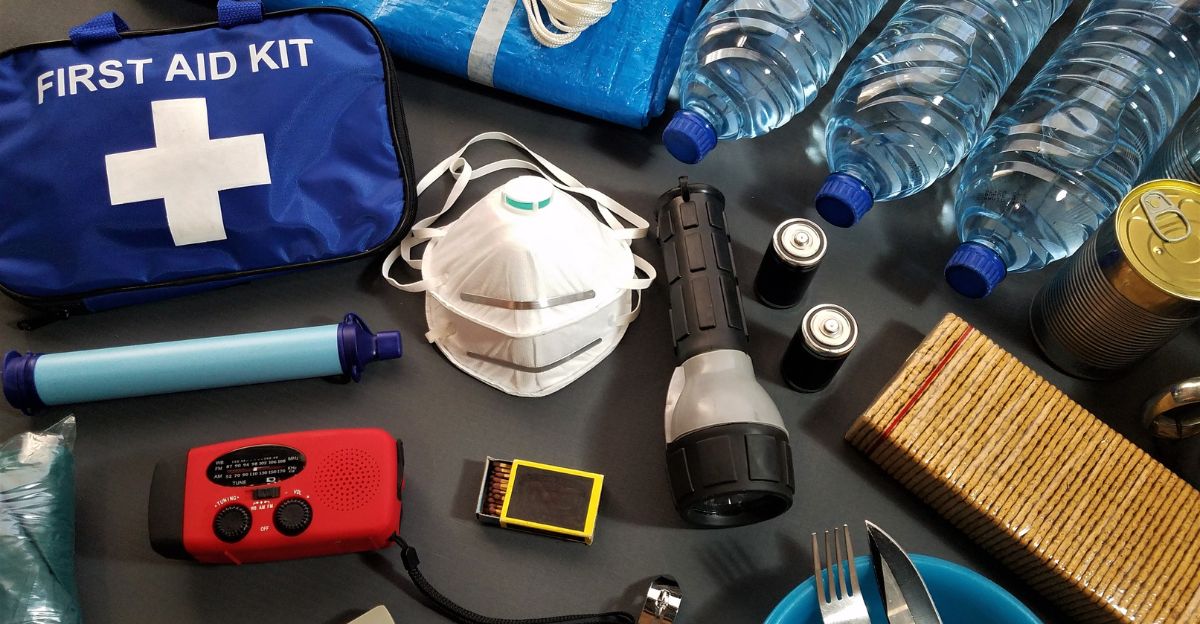
Alaska’s emergency managers used the Mount Spurr alert as a stress test for their disaster plans.
Public officials practiced sending out warnings, planning evacuations, and giving out information about how to prepare for volcanic ash.
Residents were told to assemble “volcano kits” with masks, goggles, and plastic sheeting.
While a real eruption didn’t happen, the city and state treated the event like a rehearsal, so the processes should be even smoother next time.
Warming and the Volcano
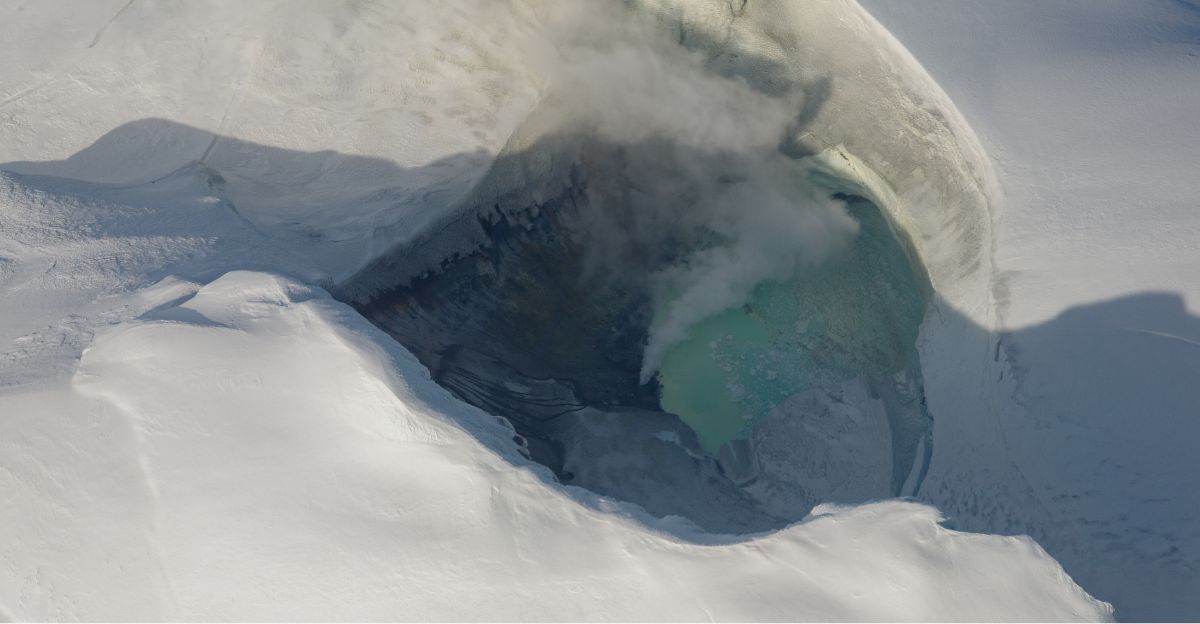
Some researchers think Alaska’s changing climate could affect its volcanoes, especially those under thick glaciers.
Melting ice can shift the pressure on magma deep below, possibly making eruptions easier or harder to happen.
However, scientists say it’s too early to know if recent volcanic unrests are linked to the state’s rapidly changing climate.
.Still, they keep watching these connections as Alaska continues warming faster than much of the world.
Changing Aviation Rules for Volcanic Risks
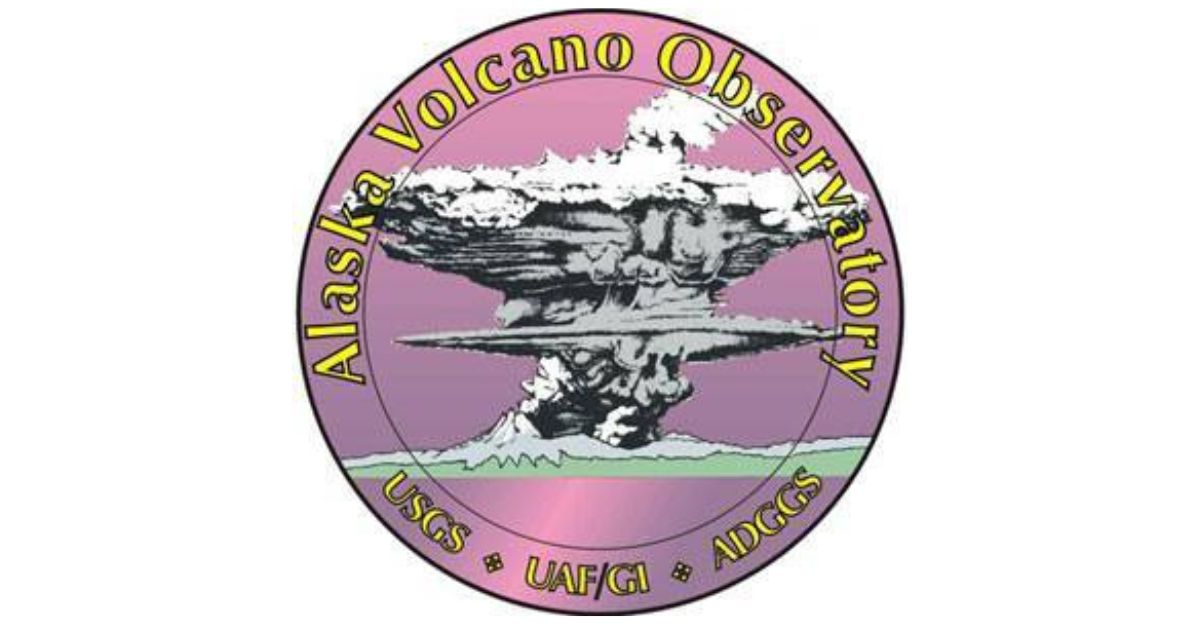
Because volcanic ash is so dangerous for jet engines, the FAA works closely with Alaska’s volcano observatory to spot and track ash clouds in real time.
New rules require pilots to report ash and airlines to have advanced technology for detection.
Lawmakers have also focused on ensuring there’s enough money to keep all this monitoring running, as almost every flight between Asia and the U.S. passes near an Alaska volcano.
Dark Tourism on the Rise
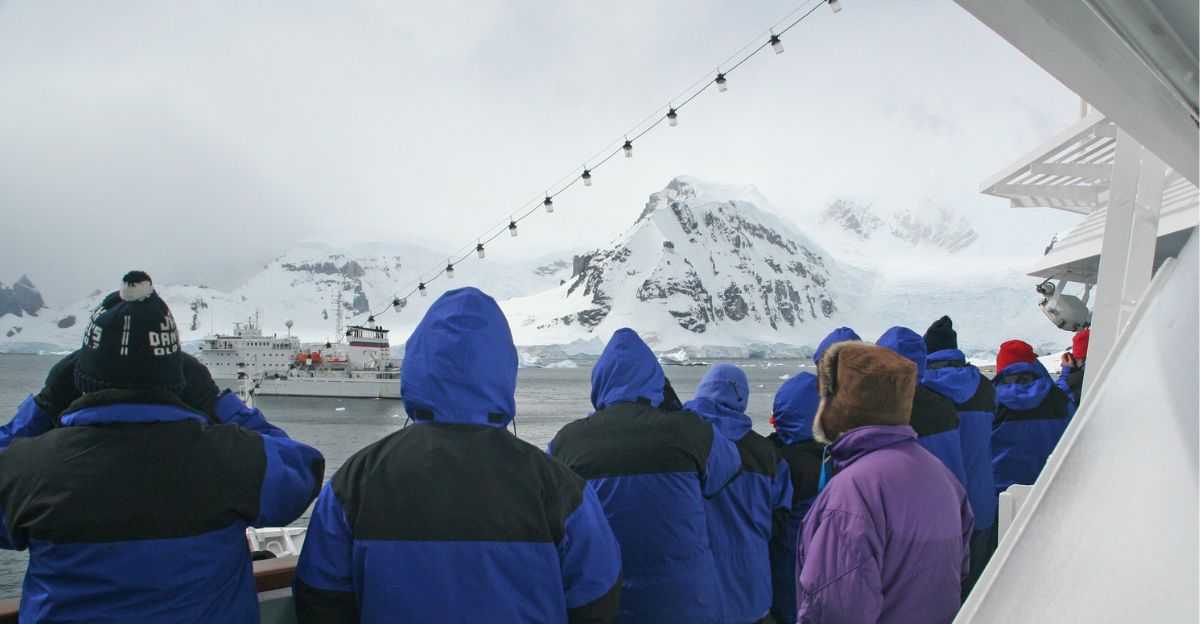
Alaska is famous for its natural wonders, and Mount Spurr attracts curious visitors during times of volcanic unrest.
While volcanoes scare some tourists away, others flock to see the action or book tours hoping for a glimpse, at a safe distance.
Guides and visitor agencies now plan for sudden closures. Still, they can also offer “volcano safaris” to catch safe views of smoke or unusual lake colors, turning worry into opportunity for those who love adventure.
Fighting Misinformation

As with any dramatic event, rumors and wrong information about Mount Spurr’s potential eruption spread quickly on social media.
The Alaska Volcano Observatory worked hard to correct false reports and overblown predictions, asking people to rely on official updates.
Scientists posted regular, plain-English briefings and used Twitter, Facebook, and news sites to reach residents.
This digital response helped keep public fear in check, reminding everyone to wait for science, not viral scary stories.
Lessons from Other “False Alarms”
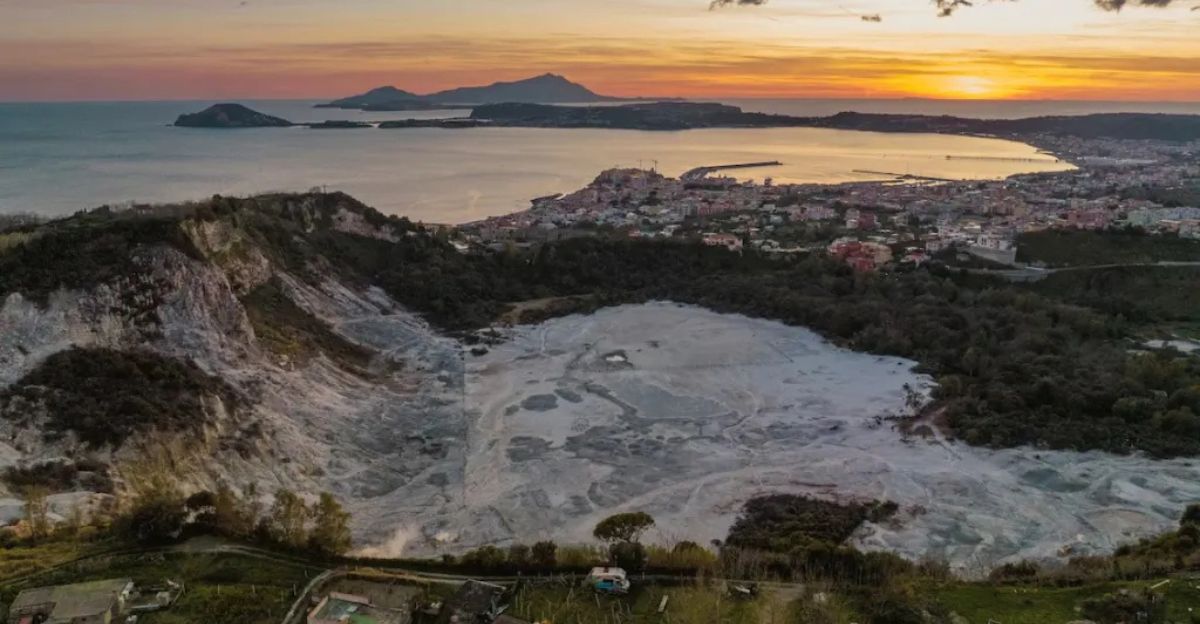
The last few decades have seen many volcanoes worldwide “wake up” and then go quiet. Italy’s Campi Flegrei, Yellowstone in the U.S., and even Mount Spurr have all had phases that made people worry, only for nature to pause.
Scientists learn a little more each time: most unrest doesn’t lead to a big eruption, but every episode teaches valuable lessons about how volcanoes “talk” before they erupt and how public communication can help or harm community readiness.
Always Watching Nature’s Power
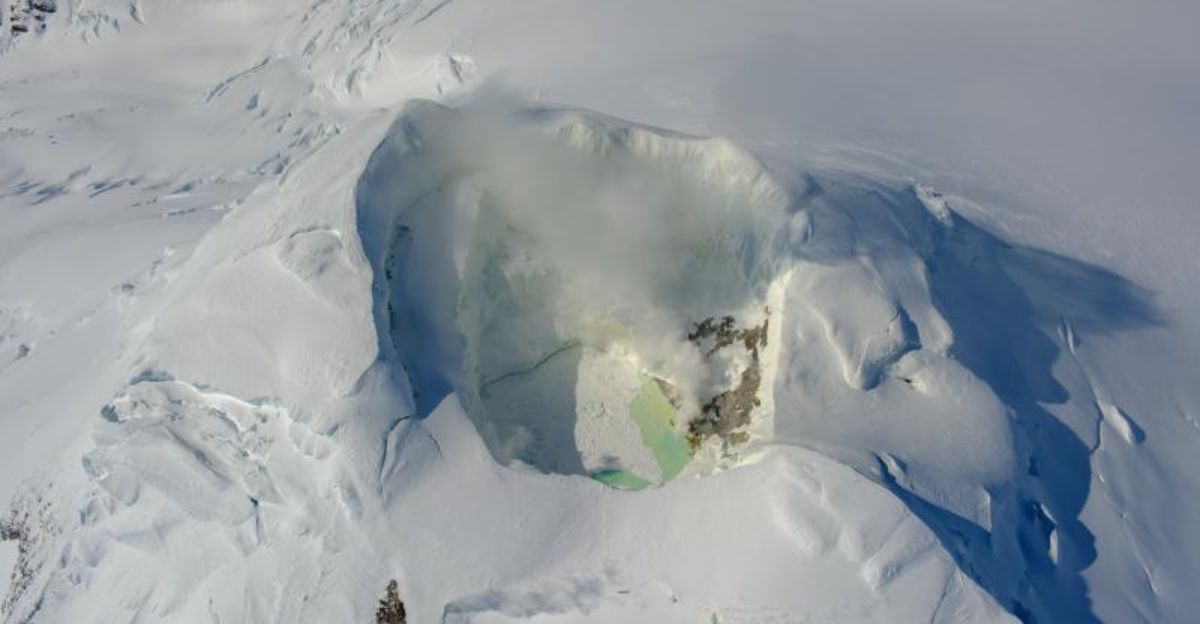
Mount Spurr’s return to calm shows how good scientists have been at tracking volcanoes, and how unpredictable nature remains.
Thanks to dense networks of sensors and up-to-the-minute data, people get better warnings than ever.
Yet, volcanoes sometimes “fail” to erupt, reminding us that uncertainty is always part of geology. For Alaska and cities like Anchorage, staying prepared and listening to scientists remains the best plan.
The hope is that the experts and the public will be even better prepared next time Spurr gets restless.